The Lazzaretto Nuovo was for three centuries the main Venetian quarantine station for the black plague.
Ship crews and travellers from plague infested ships quarantined on the Lazzaretto Nuovo, while specialised workers on the island cleansed the cargo from the ship, and the ship itself.
The two lazzaretti formed a major part of the defence of Venice against the black plague, and a rather successful defence too.
Before the Lazzaretto Nuovo
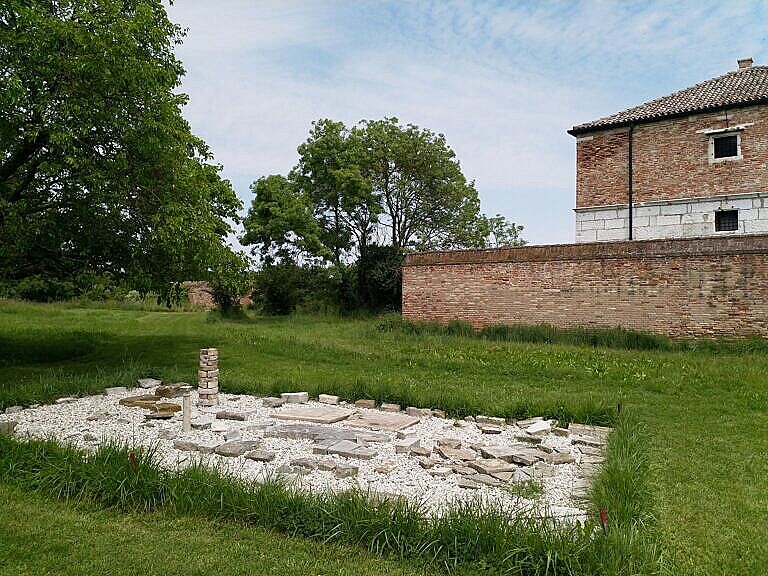
The first mention of the island in a document is from 1015, where it is referred to as vigna muradlia, a walled vineyard, surrounded by eight salt pads for extracting salt from the lagoon water.
The monks of San Giorgio Maggiore owned and cultivated this walled vineyard for several centuries.
They built a small church within the enclosure, dedicated to St Bartholomew, and some cells for the monks.
The church was demolished in the 1780s, and not else remains of the monks’ presence on the island.
The Lazzaretto Vecchio and Nuovo
The black plague arrived in Venice in 1347-48.
After many waves of the disease, in 1423 the Venetian government established a hospital for the sick, which became the Lazzaretto.
The Lazzaretto helped, but after some time the Venetians realised that it was not sufficient just to isolate the sick. They also had to isolate those who had been in contact with the sick.
Therefore, they created the Lazzaretto Nuovo in 1468 on the island of the monks.
Starting with the existing walled enclosure, over the next hundred years the structure grew into a large quarantine facility with around one hundred rooms, two hundred beds and facilities for cleaning the merchandise on board the ships.
The structure of the Lazzaretto Nuovo
The Lazzaretto Nuovo was a prison-like structure. It had, in fact, the same function of keeping people who were considered dangerous, separated from the rest of society.

Tall walls without any windows surrounded the entire island.
Internally, the Lazzaretto was divided into several compartments, also separated by tall walls with no openings. Each compartment, or contumacia, had one single locked door from the outside.
Most of the compartments housed people in quarantine. Those compartments often had small two storey rooms along the outer wall, with beds and fireplaces. Half roofs offered some shelter for sailors and poorer travellers.
A few compartments served the treatment of the goods.
Two of these contained the tezon grando, or the large warehouse, built in 1568. It is one of the largest ancient buildings in the lagoon, approximately 100×15m, divided in two parts. The many arches were originally open so the building was simply a covered part of its compartment.
On the outside of the enclosing wall, a fondamenta offered space for loading and unloading the ships that came to the island.
The quarantine procedure
The two Lazzaretti worked in tandem to keep the plague away from Venice.
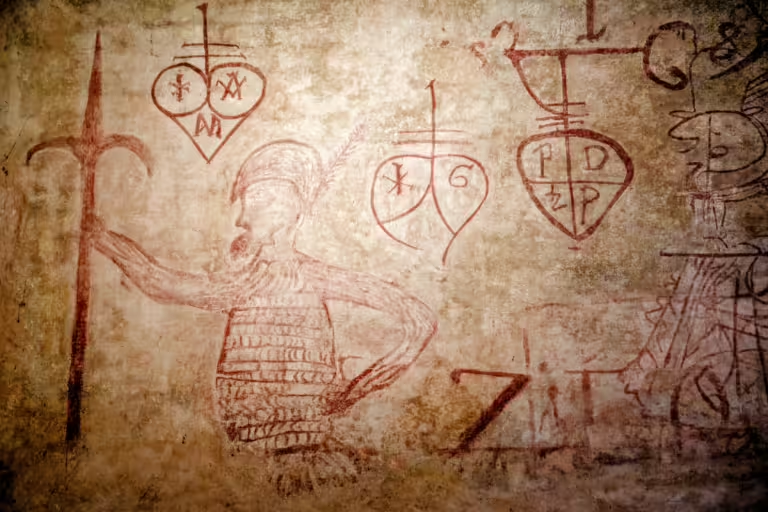
When a ship arrived to Venice, the plague doctor inspected it before it could enter the lagoon. If the plague doctor found sick people on board, he sent them to the Lazzaretto Vecchio, and diverted the ship, it’s cargo, crew and passengers to Lazzaretto Nuovo.
At the Lazzaretto Nuovo the entire crew and all other travellers on board entered one of the compartments, where they would stay for the entire quarantine period.
The quarantine lasted anything from thirty to over fifty days, but on average, it was around forty days. The word ‘quarantine’ comes from the Venetian quarantina, which means forty-ish.
All the cargo from the ship was brought into the tezon grando for cleaning, a process just as long as the quarantine of the crew. Workmen, called bastazi, cleansed the merchandise according to specific procedures for different types of goods. Often this included washing in cold, hot or salt water, fumigation, immersion in vinegar and treatment with ashes.
While the Venetians didn’t know how the contagion worked, they had some ideas. Mostly these were wrong, but they did nevertheless at times lead to functional procedures.
These bastazi have left an unique treasure of writings and drawings from the late 1500s and early 1600s on the walls of the tezon grando.
The end of the Lazzaretto

The cases of bubonic plague waned in the 1700s, and after three hundred years of service, at the end of the century the Lazzaretto was too old, too big and too expensive for the size of the problem.
Consequently, the Venetian senate decided to demolish the whole place and sell the materials. For the remaining few cases of ships with the plague on board, the senate created the Lazzaretto Novissimo on the island of Poveglia in the southern lagoon.
However, the Lazzaretto Nuovo was not demolished. In 1797, the Republic of Venice surrendered to Napoleon, and within a year Venice was under Austrian rule.
The Austrians turn the island into a fortification, or rather a munitions dump for the Torre Massimiliana on the adjacent island of Sant’Erasmo. They demolished many of the buildings and all the inner walls of the Lazzaretto, but the two gunpowder towers and the tezon grando were spared.
When Venice later became Italian in 1866, the Italian army took over the island, and they stayed there until 1975. However, the last several decades, the island served no real military purpose, and it was all but abandoned.
When the army left the island in the 1970s, it was completely overgrown and the buildings were dilapidated and partially collapsed.
The rebirth of an island
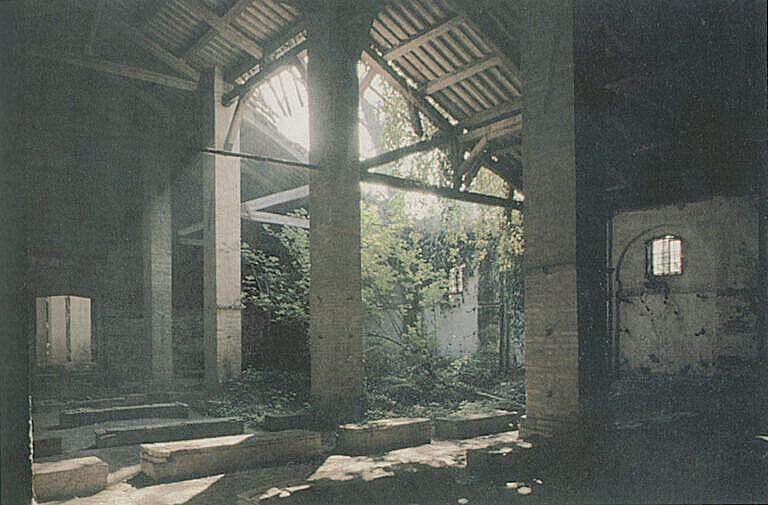
Soon after the military left, a group of volunteers started cleaning up the island. They cut down the brambles and excessive vegetation, and repaired some of the roofs.
Later, they founded the EKOS Club, a non-profit organisation, and obtained a concession on the island from the Italian state.
The EKOS Club together with the ArcheoClub Italia are still today, forty years later, in charge of the island.
The Archeoclub Italia has organised archaeological digs and surveys over the years, and restoration of the writings and drawings in the tezon grando.
The combined result is that the Lazzaretto Nuovo is one of the very few abandoned islands of the lagoon that have been recovered, and it is by far the best researched and studied of the Venetian lazzaretti.
Related articles
- The Venetian Lazzaretti
- A Chronology of the Lazzaretto Nuovo
- Lazzaretto Vecchio
- Quarantine in the 1600s
- Capitoli Da osservarsi nelli Lazaretti — 1674
Some photos from the Lazzaretto Nuovo
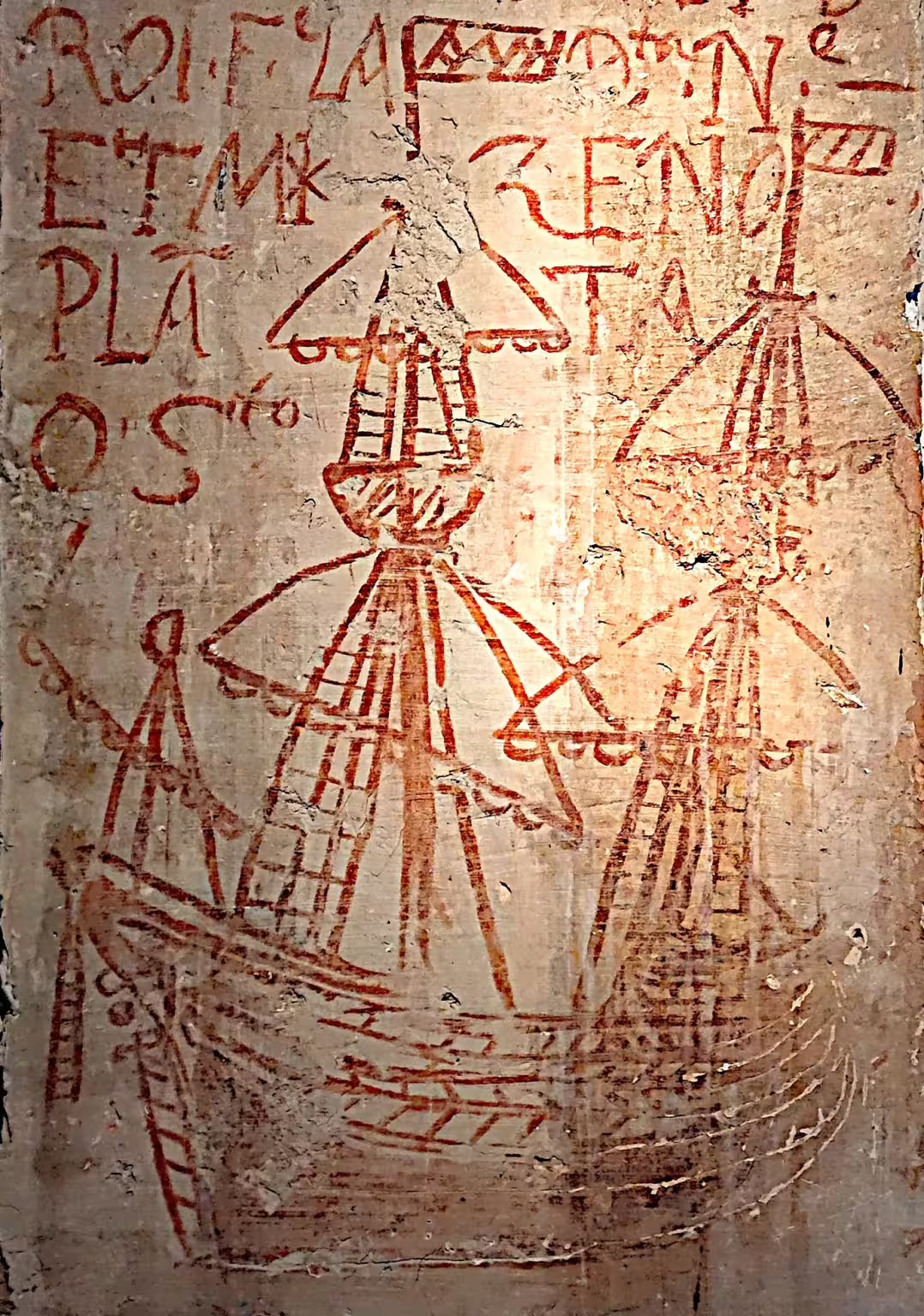


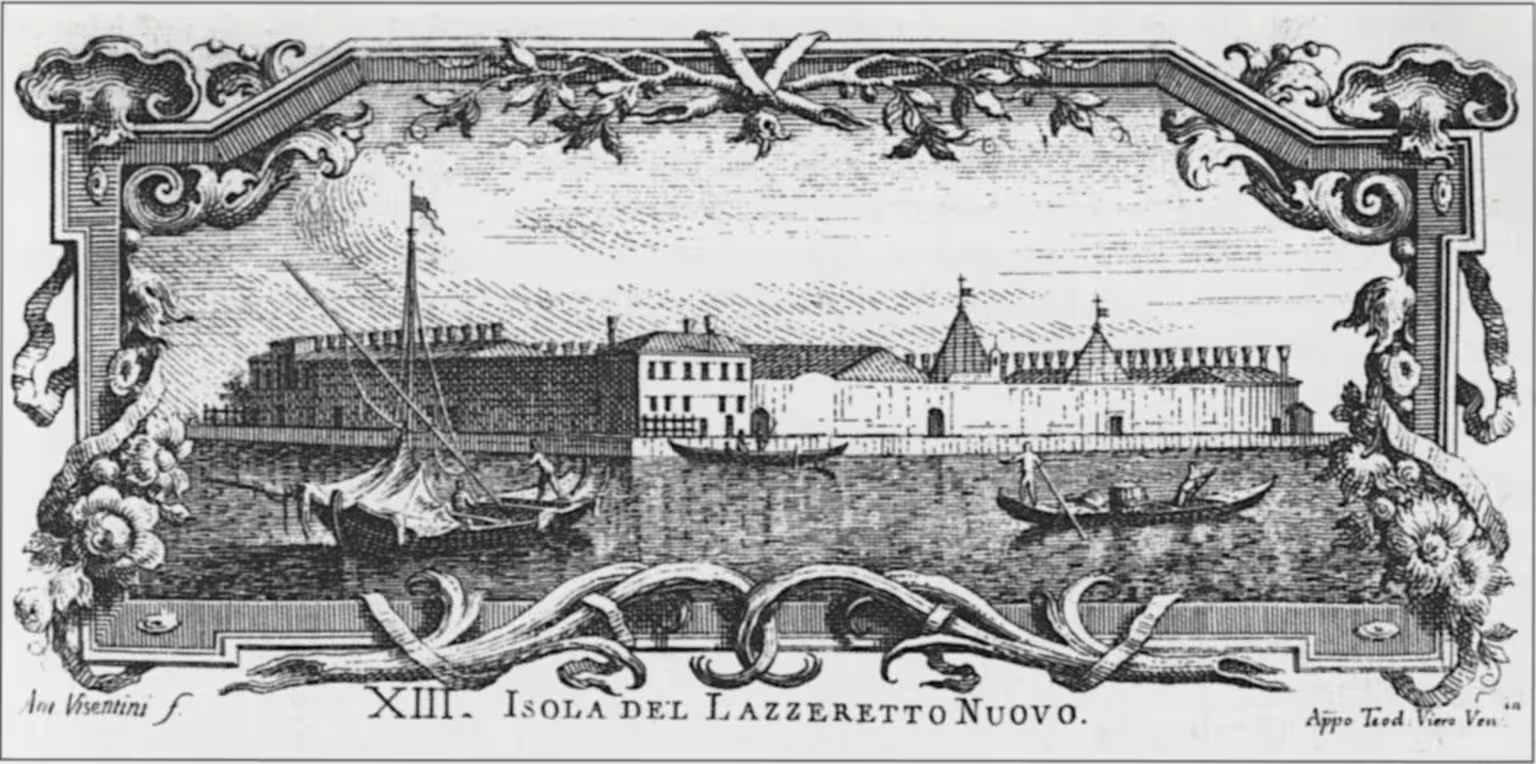
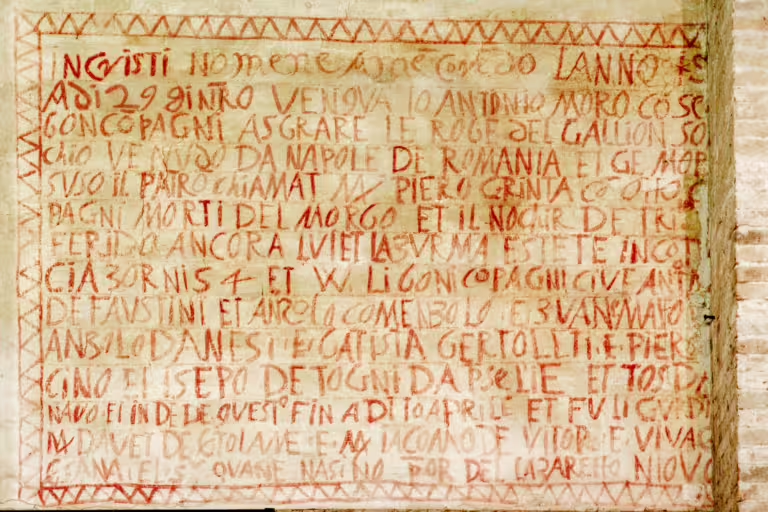
Bibliography
Fazzini, Gerolamo (ed.). Venezia : isola del Lazzaretto Nuovo in Guide archeologiche della Laguna di Venezia. Archeoclub Venezia, 2004.
Fazzini, Gerolamo (ed.). I Lazzaretti Veneziani : il sistema sanitario della Serenissima contro le epidemie. Marcianum Press, Venezia, 2024.
Malagnini, Francesca. Il Lazzaretto nuovo di Venezia : le scritture parietali in Storie d'Italia. 2017.

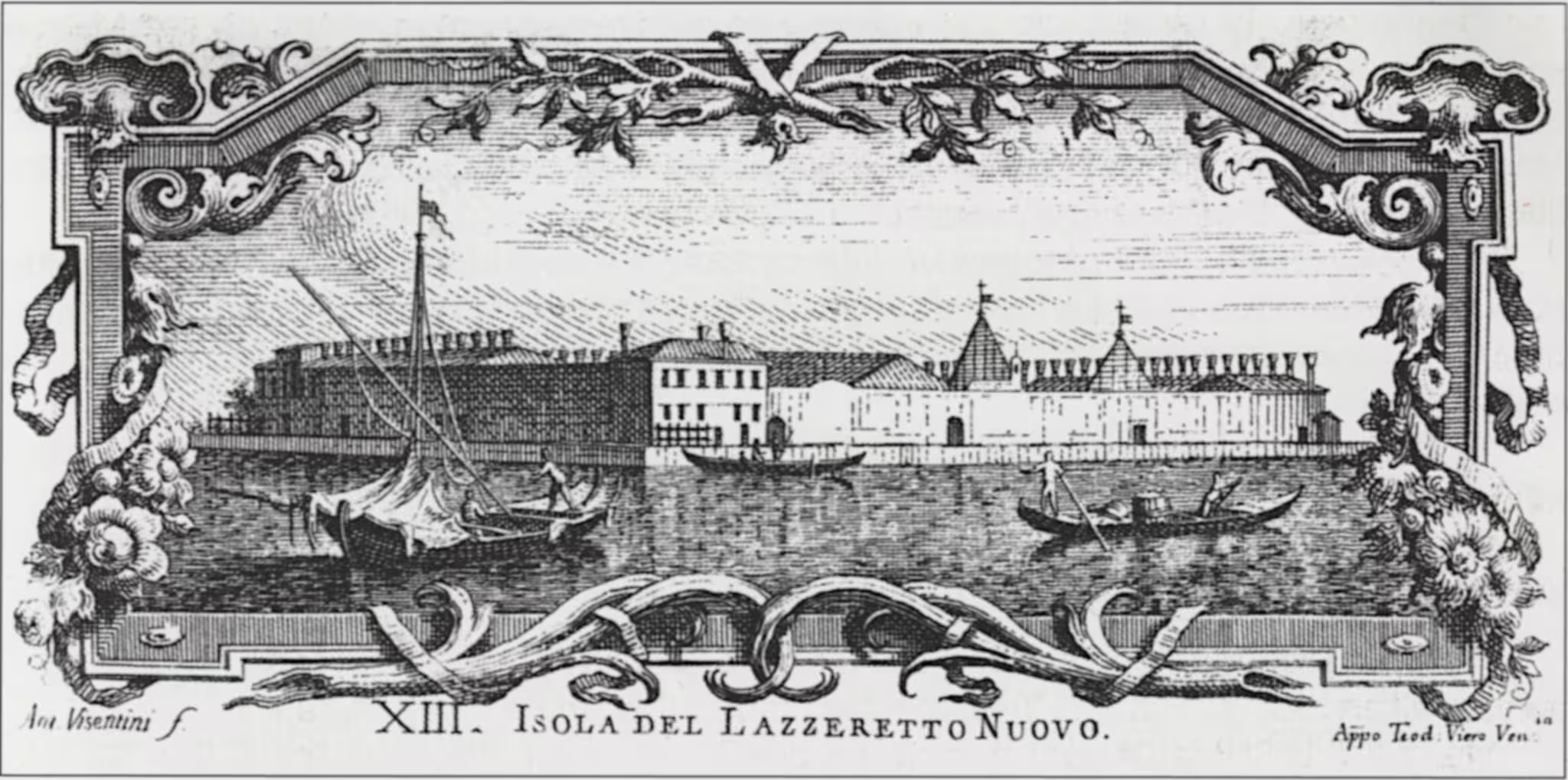
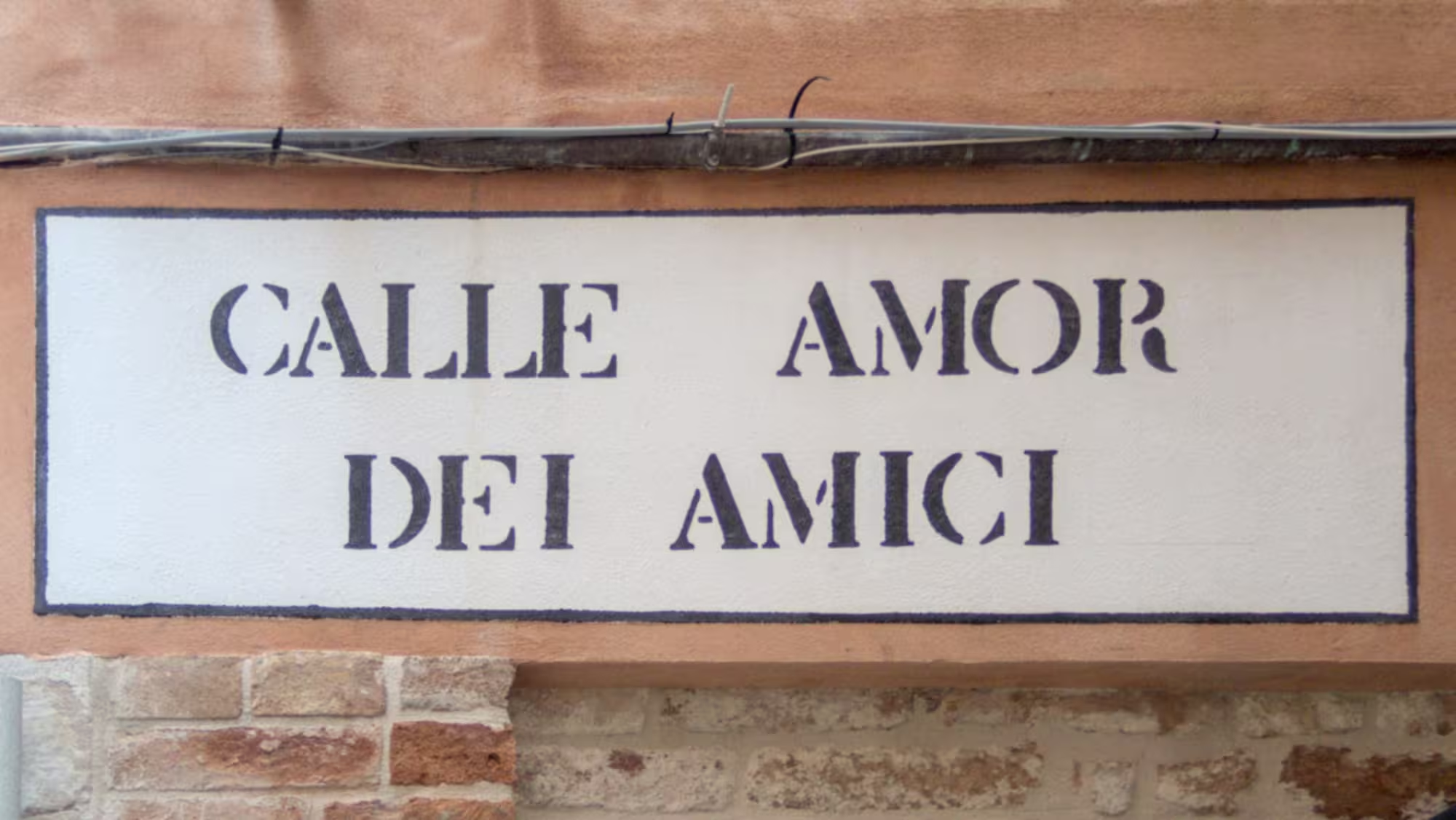
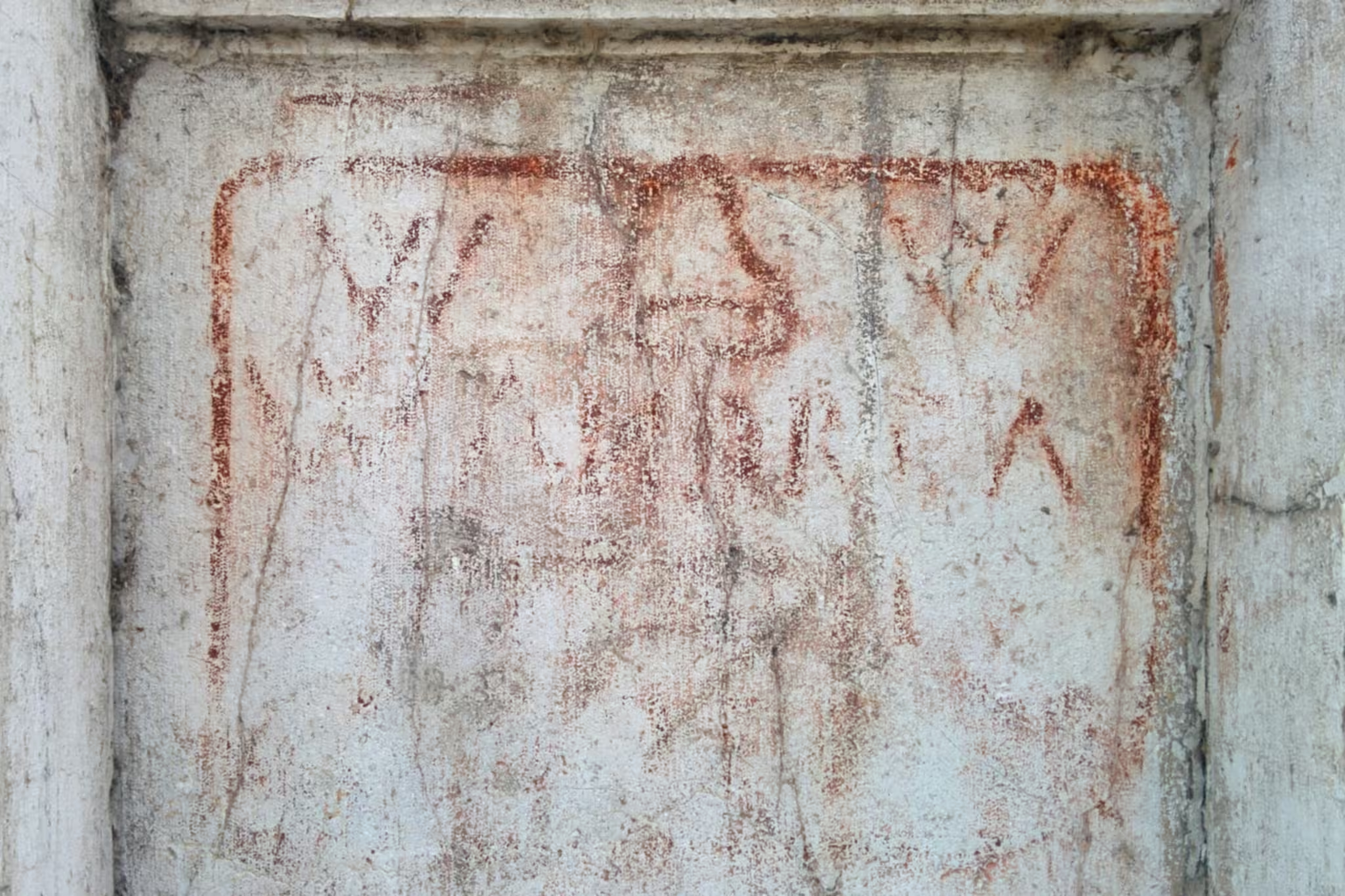

Leave a Reply